Home> Company News> Parker Hydraulic Pump Safety: Essential Guidelines for Pressure Adjustment and Operation
- AddressToh Guan Centre, 31/F,69 Toh Guan Rd E, Singapore 608609
- Factory AddressToh Guan Centre, 31/F,69 Toh Guan Rd E, Singapore 608609
- Worktime9:00-18:00
- Phone(Working Time)0065-31591578
- Phone(Nonworking Time)0065-31591578
- Fax0065-31591339
Parker Hydraulic Pump Safety: Essential Guidelines for Pressure Adjustment and Operation
2023-04-25 15:20:26Parker hydraulic pumps are essential components in various industrial, mobile, and aerospace applications. These pumps are known for their high performance, reliability, and durability, and are designed to meet the rigorous demands of modern hydraulic systems.
Parker offers a wide range of hydraulic pump products, including gear pumps, piston pumps, and vane pumps, as well as customized solutions for specific applications. These pumps are used in a wide range of industries, including construction, agriculture, oil and gas, aerospace, and more.
The importance of Parker hydraulic pumps lies in their ability to provide hydraulic power to various systems, allowing for efficient and reliable operation. With proper installation, operation, and maintenance, Parker hydraulic pumps can provide long-lasting and high-performing service in a range of demanding applications.
 parker hydraulic pump pressure adjustment
parker hydraulic pump pressure adjustment
Importance of Safety Guidelines While Operating Parker Hydraulic Pumps
Hydraulic pumps, including those manufactured by Parker, can be powerful tools used in a wide range of industrial applications. However, it's important to remember that these pumps operate at high pressures and can be dangerous if not used correctly. That's why it's critical to follow safety guidelines while operating Parker hydraulic pumps.
First and foremost, operators should be properly trained and qualified to use hydraulic pumps. They should understand the risks associated with hydraulic systems and be able to identify potential hazards before beginning work. This includes wearing the appropriate personal protective equipment, such as gloves, safety glasses, and hard hats.
Operators should also be familiar with the specific safety guidelines for the Parker hydraulic pump they're using. These guidelines can vary depending on the model, so it's important to consult the manufacturer's manual or consult with a qualified technician. Safety guidelines may include proper lifting and rigging techniques, proper handling of hoses and fittings, and proper installation and maintenance of the pump.
In addition to following safety guidelines, it's important to regularly inspect and maintain hydraulic pumps to ensure they're functioning properly. This can include checking for leaks, worn hoses or fittings, and damaged components. Any issues should be addressed immediately to prevent accidents or equipment failure.
Overall, following safety guidelines while operating Parker hydraulic pumps is critical to ensuring the safety of operators and the efficiency and longevity of the equipment. By understanding the risks associated with hydraulic systems and taking the necessary precautions, operators can use these powerful tools safely and effectively in a wide range of industrial applications.
Factors to consider while adjusting the pressure settings of Parker hydraulic pumps
Parker hydraulic pumps are designed to work at specific pressure settings that ensure optimal performance and longevity. However, these pressure settings may need to be adjusted depending on the application or changes in operating conditions. When adjusting the pressure settings of Parker hydraulic pumps, several factors should be considered to ensure the best results.
-
System Requirements: The pressure settings of Parker hydraulic pumps should be adjusted based on the specific requirements of the hydraulic system. This includes factors such as the load on the system, flow rate, and the type of fluid being used. Understanding the system requirements is critical to setting the right pressure levels that can meet the system's needs.
-
Operating Temperature Range: Parker hydraulic pumps are designed to operate within a specific temperature range. The pressure settings must be adjusted to ensure that the pump does not operate outside the recommended temperature range. Operating at too high or too low temperatures can cause damage to the pump and other system components.
-
Materials of Construction: The pressure settings of Parker hydraulic pumps should also be adjusted based on the materials of construction. Different materials have different properties, and adjusting the pressure settings incorrectly can cause damage to the pump or other system components. For example, materials with lower strength may require lower pressure settings.
-
Port Size and Type: The port size and type can also affect the pressure settings of Parker hydraulic pumps. Adjusting the pressure settings without considering the port size and type can cause issues such as leaks or reduced performance.
-
Flow Rate: The flow rate of the hydraulic system can also affect the pressure settings of Parker hydraulic pumps. Higher flow rates may require higher pressure settings to ensure optimal performance.
In summary, adjusting the pressure settings of Parker hydraulic pumps requires careful consideration of various factors, including system requirements, operating temperature range, materials of construction, port size and type, and flow rate. By taking these factors into account, operators can ensure that the hydraulic pump operates at the optimal pressure levels, leading to increased efficiency, reduced maintenance costs, and longer system lifespan.
Common Safety Hazards Associated with Parker Hydraulic Pump Operation and Their Mitigation
When operating Parker hydraulic pumps, there are several potential safety hazards that must be taken into consideration. By being aware of these hazards and taking appropriate precautions, operators can reduce the risk of injury or damage to equipment. Some common safety hazards associated with Parker hydraulic pump operation include:
-
High-pressure fluids: Hydraulic systems operate at high pressure, which can cause severe injuries if not handled properly. It is important to always wear appropriate personal protective equipment (PPE), such as gloves and safety glasses, when working with hydraulic fluids.
-
Electrical hazards: Many hydraulic systems are powered by electricity, which can present its own set of hazards. Operators should ensure that all electrical components are properly grounded and that they follow appropriate electrical safety protocols.
-
Moving parts: Hydraulic systems often involve moving parts, such as pumps, motors, and cylinders. These parts can cause injuries if they are not properly guarded or if operators come into contact with them while they are in motion.
-
Heat: Hydraulic systems generate heat during operation, which can cause burns or other injuries if operators come into contact with hot components.
To mitigate these hazards, operators should follow appropriate safety protocols, including wearing PPE, grounding electrical components, and ensuring that all moving parts are properly guarded. In addition, operators should receive proper training on the safe operation of hydraulic systems and should always follow the manufacturer's guidelines for proper operation and maintenance. By taking these precautions, operators can reduce the risk of injury and ensure that their hydraulic systems operate safely and efficiently.
Parker Hydraulic Pump Pressure Adjustment: Step-by-Step Guide
Proper pressure adjustment is critical to ensure the optimal performance of Parker hydraulic pumps. Here is a step-by-step guide to adjusting the pressure settings of your Parker hydraulic pump:
-
Identify the pump: First, ensure that you have identified the Parker hydraulic pump that you need to adjust the pressure settings for. Check the model number and consult the product manual if necessary.
-
Shut off the system: Before adjusting the pressure settings of the pump, shut off the system and release any pressure in the lines. This will help to prevent injury and damage to the system.
-
Access the pump: Once the system is shut off, locate the Parker hydraulic pump and identify the pressure adjustment mechanism. This may be a manual knob, an electrical switch, or a hydraulic valve.
-
Check the existing pressure settings: Before making any adjustments, use a pressure gauge to check the existing pressure settings. This will provide a baseline for making adjustments and ensure that the system is operating within safe parameters.
-
Adjust the pressure settings: Using the appropriate adjustment mechanism, make the necessary changes to the pressure settings. Be sure to make adjustments in small increments and monitor the pressure gauge closely to avoid over-pressurizing the system.
-
Test the system: After making the necessary adjustments, test the system to ensure that it is operating properly. Monitor the pressure gauge and observe the system's performance to ensure that the pressure settings are appropriate for the application.
-
Record the adjustments: Finally, record any adjustments that you make to the pressure settings of your Parker hydraulic pump. This will help you to keep track of changes over time and ensure that the system is always operating within safe parameters.
It is important to note that if you are not comfortable with adjusting the pressure settings of your Parker hydraulic pump, it is best to consult a professional. Improper pressure adjustment can result in injury or damage to the system.
 parker hydraulic pump pressure adjustment
parker hydraulic pump pressure adjustment
The significance of regular maintenance and inspection for Parker hydraulic pumps
Regular maintenance and inspection are essential for ensuring the optimal performance and longevity of Parker hydraulic pumps. Neglecting routine maintenance and inspection can lead to increased wear and tear on the pump, reduced efficiency, and even system failure. It is therefore crucial to develop a regular maintenance schedule and stick to it.
One of the key aspects of Parker hydraulic pump maintenance is monitoring and replacing the pump's fluid. Over time, hydraulic fluid can become contaminated with particles and other debris that can damage the pump's components. Regularly replacing the hydraulic fluid can help to keep the pump functioning smoothly and extend its lifespan.
Other important maintenance tasks for Parker hydraulic pumps include checking and replacing filters, inspecting and lubricating moving parts, and testing the pump's pressure and flow rate. It is also important to inspect hoses, fittings, and other system components for signs of wear and damage, as these can also affect the pump's performance.
Regular inspection of the hydraulic pump can help to identify potential problems before they become more serious, allowing for timely repairs or replacements. It is recommended to schedule inspections at least once a year or more frequently if the pump is operating in harsh conditions.
In addition to regular maintenance and inspection, it is important to follow manufacturer guidelines for storage and handling of the pump. This includes protecting the pump from extreme temperatures, avoiding exposure to moisture, and properly securing the pump during transport.
Overall, regular maintenance and inspection are critical for ensuring the optimal performance and longevity of Parker hydraulic pumps. By following a regular maintenance schedule and taking steps to protect the pump from damage, it is possible to keep the pump operating smoothly and efficiently for many years.
Common problems associated with Parker hydraulic pumps and their troubleshooting
Even with regular maintenance and inspection, problems can arise with Parker hydraulic pumps. Here are some common issues that may occur and troubleshooting tips for resolving them:
-
Low or no pressure output: If the pump is not delivering the expected pressure or no pressure at all, it may be due to a clogged or dirty filter, worn or damaged pump parts, or incorrect adjustment of pressure settings. Start by checking the filter and replacing it if necessary. If the issue persists, consult the manufacturer's specifications for the appropriate pressure adjustment or consider replacing the pump parts.
-
Overheating: Overheating can occur due to excessive load or an incorrect flow rate, resulting in pump failure. Check the system load and flow rate to ensure they are within the manufacturer's specifications. Also, ensure that the pump is correctly installed and adequately lubricated.
-
Leakage: Hydraulic leaks can occur due to damaged seals, loose fittings, or worn pump parts. Inspect the pump for any visible signs of leakage, such as oil stains or puddles, and replace any damaged seals or fittings. If the issue persists, consider replacing the worn pump parts.
-
Excessive noise: Excessive noise can occur due to air in the hydraulic system, cavitation, or worn pump parts. Start by checking for air in the system and removing it if present. If the issue persists, consult the manufacturer's specifications for the appropriate pressure and flow rate settings, or consider replacing the worn pump parts.
-
Vibration: Vibration can occur due to misalignment, worn or damaged pump parts, or an unbalanced load. Check the system for proper alignment and balance, and replace any worn or damaged pump parts.
By promptly addressing any issues with Parker hydraulic pumps, you can avoid costly downtime and ensure optimal system performance. Regular maintenance and inspection can also help identify potential problems before they escalate, allowing you to take preventive measures and keep your hydraulic system running smoothly.
Best Practices for Safe and Efficient Parker Hydraulic Pump Operation
Properly operating and maintaining your Parker hydraulic pump is crucial to ensure optimal performance and longevity. Here are some best practices for safe and efficient Parker hydraulic pump operation:
-
Follow manufacturer's instructions: Always refer to the manufacturer's instructions for proper operation and maintenance of your Parker hydraulic pump. These instructions provide important guidelines and recommendations for safe and efficient operation.
-
Regular maintenance: Regular maintenance is crucial to keep your Parker hydraulic pump in good working condition. Follow the manufacturer's recommended maintenance schedule and inspect the pump for any signs of wear and tear.
-
Use the right fluid: Use the recommended hydraulic fluid for your Parker hydraulic pump. Using the wrong fluid can damage the pump and reduce its efficiency.
-
Monitor system pressure: Regularly monitor the system pressure to ensure it is within the recommended range. Over-pressurizing the system can damage the pump and other components.
-
Proper filtration: Use a proper filtration system to ensure that contaminants are removed from the hydraulic fluid. Contaminants can cause damage to the pump and other components, reducing efficiency and performance.
-
Avoid shock loading: Avoid sudden or abrupt changes in pressure, flow or load to prevent shock loading. Shock loading can cause damage to the pump and other components.
-
Protect against contamination: Keep the pump and system free from contamination by sealing off the hydraulic fluid reservoir and filtering the fluid before it enters the pump.
-
Regularly inspect hoses and fittings: Inspect hoses and fittings regularly for signs of wear and damage. Replace any damaged hoses or fittings immediately to prevent leaks and ensure safe operation.
-
Use proper tools: Use the right tools and equipment for the job, such as torque wrenches, pressure gauges, and other measuring devices. Using improper tools can cause damage to the pump and other components.
-
Keep records: Keep a record of all maintenance and repairs performed on your Parker hydraulic pump. This will help you to identify any recurring issues and keep track of the pump's overall performance.
By following these best practices for safe and efficient Parker hydraulic pump operation, you can extend the life of your pump, reduce maintenance costs, and ensure optimal performance.
Mud pump bearings Turntable bearings Agricultural bearings Angular Contact Bearings Duplex Angular Contact Bearings Industrial bearings Iron and steel industry bearings Power transmission bearing Hydrostatic centripetal bearing Ball Thrust Bearings Papermaking Machinery bearings Agricultural machinery bearing McGILL bearing Rexroth pump assay Komatsu motor parts BOSCH Fuel injector Hitachi excavator parts Axial Piston Pumps Sauer Danfoss pump Eaton pump parts Nachi pump assay Linde pump Mining Construction Ball Bearings Linear Bearings vane pumps gear pumps inc piston pumps Thin-Section Ball Bearings Adapter Sleeves pressure valves gear reducer relief valves Mcgill Bearing Die & Mold Plain-Bearing Bushings FAG Bearing Singapore SKF bearing Accessories SKF bearing Housing SKF bearing shaft seals SKF Bearing units Bearing Distributors Inventory Oilfield mud pump bearings Heavy-Duty Shaker Screen Spherical Double row double row tapered roller bearings (inch series) Multi-Row Roller Bearings NTN Four Row Cylindrical Roller Bearings NTN SL Type Cylindrical Roller Bearings NTN SL Type Cylindrical Roller Bearings for Sheaves NTN Single Row Tapered Roller Bearings NTN Double Row Tapered Roller Bearings NTN Four Row Tapered Roller Bearings NTN Spherical Roller Bearings NTN Thrust Bearings NTN Bearings for special applications NTN DOUBLE-ROW CYLINDRICAL ROLLER BEARINGS NSK FULL-COMPLEMENT CYLINDRICAL ROLLER BEARINGS NSK SINGLE-ROW TAPERED ROLLER BEARINGS NSK YUKEN Piston pump DOUBLE-ROW TAPERED ROLLER BEARINGS NSK SPHERICAL ROLLER BEARINGS NSK SINGLE-DIRECTION THRUST BALL BEARINGS NSK CYLINDRICAL ROLLER THRUST BEARINGS NSK TAPERED ROLLER THRUST BEARINGS NSK SPHERICAL THRUST ROLLER BEARINGS NSK ROLLING BEARINGS FOR STEEL MILLS NSK SEALED-CLEAN FOUR-ROW TAPERED ROLLER BEARINGS NSK FOUR-ROW CYLINDRICAL ROLLER BEARINGS NSK DOUBLE-ROW TAPERED ROLLER BEARINGS NSK Roll Bearings for Mills NSK Ball Bearings NSK TAPERED ROLLER THRUST BEARINGS For Adjusting Screws NSK Thin Section Bearings Kaydon Double row double row tapered roller bearings (inch series) Double direction thrust tapered roller bearings Full complement Tapered roller Thrust bearing Thrust cylindrical roller bearings Thrust spherical roller bearings Sealed Four Row Tapered Roller Bearings Four row tapered roller bearings Double outer double row tapered roller bearings TDO double-row tapered roller bearings Single row tapered roller bearings inch Double inner double row tapered roller bearings TDI Double inner double row tapered roller bearings inch Spherical roller bearing Four row cylindrical roller bearings Single row cylindrical roller bearings Full row of cylindrical roller bearings Double row cylindrical roller bearings Double row full complement cylindrical roller bearings Four point contact ball bearings Double row angular contact ball bearings Deep groove ball bearings ANGULAR CONTACT THRUST BALL BEARINGS TYPE TVL DTVL angular contact thrust ball bearing. TP thrust cylindrical roller bearing TPS thrust cylindrical roller bearing THRUST SPHERICAL ROLLER BEARINGS TYPES TSR-EJ AND TSR-EM TTHD THRUST TAPERED ROLLER BEARINGS TTHDFL thrust tapered roller bearing TTHDFLSA THRUST TAPERED ROLLER BEARINGS THRUST TAPERED ROLLER BEARINGS TYPES TTSP, TTSPS AND TTSPL THRUST TAPERED ROLLER BEARINGS – TYPES TTC, TTCS AND TTCL SCREWDOWN BEARINGS – TYPES TTHDSX/SV AND TTHDFLSX/SV THRUST TAPERED ROLLER BEARING TYPES TTDWK AND TTDFLK CROSSED ROLLER BEARINGS TXR Tapered Roller bearings double-row • Type TDO Tapered Roller bearings double-row TDI TDIT Tapered Roller Bearings double-row TNA Tapered Roller Bearings double-row TNASWE Tapered Roller Bearings double-row Spacer assemblies TTVS TTSP TTC TTCS TTCL tapered roller thrust BEARINGS Heavy-Duty Shaker Screen Spherical Roller Bearings Timken SPHERICAL ROLLER BEARINGS CYLINDRICAL ROLLER BEARINGS ONE-ROW METRIC ISO SERIES CYLINDRICAL ROLLER BEARINGS one-row STANDARD SERIES CYLINDRICAL ROLLER BEARINGS FULL-COMPLEMENT NCF CYLINDRICAL ROLLER BEARINGS TWO-Row Four-Row Cylindrical Roller Bearings CYLINDRICAL ROLLER BEARINGS HJ SERIES CYLINDRICAL ROLLER BEARINGS 5200 A5200 metric series HeavY-duty needle roller bearings four-row cylindrical roller Bearing assembly four-row cylindrical roller Bearing inner ring Outer assembly four-row tapered roller Bearings • tQow – 2tdiw Timken Sealed roll neck Bearings four-row tapErEd rollEr BEaringS tQitS TnasWH TWo-roW TaPered roller bearings TdiT TnaT two-row tapErEd rollEr BEaringS tdik THrusT TaPered roller bearings TTdFlk, TTdW and TTdk bearings screwdown systems thrust tapered rollEr Bearings Thrust spherical roller bearing Mud pump bearings TOKYO-KEIKI piston pump TOKYO-KEIKI vane pump DAIKIN piston pump DAIKIN vane pump DAIKIN Rotor pump VICKERS Piston pump Vickers vane pump VICKERS gear pump NACHI gear pump NACHI piston pump Rexroth A1VO Rexroth A10VSO Rexroth AA4VSO Rexroth A15VSO Rexroth AZPF parker PV piston pump parker PVP piston pump parker PAVC piston pump parker vane pump Multi-Row Roller Bearings NTN Four Row Cylindrical Roller Bearings NTN SL Type Cylindrical Roller Bearings NTN SL Type Cylindrical Roller Bearings for Sheaves NTN Single Row Tapered Roller Bearings NTN Double Row Tapered Roller Bearings NTN Four Row Tapered Roller Bearings NTN Spherical Roller Bearings NTN Thrust Bearings NTN Bearings for special applications NTN DOUBLE-ROW CYLINDRICAL ROLLER BEARINGS NSK FULL-COMPLEMENT CYLINDRICAL ROLLER BEARINGS NSK SINGLE-ROW TAPERED ROLLER BEARINGS NSK YUKEN Piston pump DOUBLE-ROW TAPERED ROLLER BEARINGS NSK SPHERICAL ROLLER BEARINGS NSK SINGLE-DIRECTION THRUST BALL BEARINGS NSK CYLINDRICAL ROLLER THRUST BEARINGS NSK TAPERED ROLLER THRUST BEARINGS NSK SPHERICAL THRUST ROLLER BEARINGS NSK ROLLING BEARINGS FOR STEEL MILLS NSK SEALED-CLEAN FOUR-ROW TAPERED ROLLER BEARINGS NSK FOUR-ROW CYLINDRICAL ROLLER BEARINGS NSK DOUBLE-ROW TAPERED ROLLER BEARINGS NSK Roll Bearings for Mills NSK CROSSED-ROLLER BEARINGS NSK Ball Bearings NSK TAPERED ROLLER THRUST BEARINGS For Adjusting Screws NSK Roller Bearings NSK Thin Section Bearings Kaydon Double row double row tapered roller bearings (inch series) Double direction thrust tapered roller bearings Full complement Tapered roller Thrust bearing Thrust cylindrical roller bearings Thrust spherical roller bearings Sealed Four Row Tapered Roller Bearings Four row tapered roller bearings Double outer double row tapered roller bearings TDO double-row tapered roller bearings Single row tapered roller bearings inch Double inner double row tapered roller bearings TDI Single row tapered roller bearings Double inner double row tapered roller bearings inch Split spherical roller bearings Spherical roller bearing Four row cylindrical roller bearings Single row cylindrical roller bearings Full row of cylindrical roller bearings Double row cylindrical roller bearings Double row full complement cylindrical roller bearings Four point contact ball bearings Double row angular contact ball bearings Deep groove ball bearings ANGULAR CONTACT THRUST BALL BEARINGS TYPE TVL DTVL angular contact thrust ball bearing. TP thrust cylindrical roller bearing TPS thrust cylindrical roller bearing THRUST SPHERICAL ROLLER BEARINGS TYPES TSR-EJ AND TSR-EM TTHD THRUST TAPERED ROLLER BEARINGS TTHDFL thrust tapered roller bearing TTHDFLSA THRUST TAPERED ROLLER BEARINGS THRUST TAPERED ROLLER BEARINGS TYPES TTSP, TTSPS AND TTSPL THRUST TAPERED ROLLER BEARINGS – TYPES TTC, TTCS AND TTCL SCREWDOWN BEARINGS – TYPES TTHDSX/SV AND TTHDFLSX/SV THRUST TAPERED ROLLER BEARING TYPES TTDWK AND TTDFLK CROSSED ROLLER BEARINGS TXR Tapered Roller bearings double-row • Type TDO Tapered Roller bearings double-row TDI TDIT Tapered Roller Bearings double-row Spacer assemblies TTVS TTSP TTC TTCS TTCL tapered roller thrust BEARINGS Heavy-Duty Shaker Screen Spherical Roller Bearings Timken SPHERICAL ROLLER BEARINGS CYLINDRICAL ROLLER BEARINGS ONE-ROW METRIC ISO SERIES CYLINDRICAL ROLLER BEARINGS one-row STANDARD SERIES CYLINDRICAL ROLLER BEARINGS FULL-COMPLEMENT NCF CYLINDRICAL ROLLER BEARINGS TWO-Row Four-Row Cylindrical Roller Bearings CYLINDRICAL ROLLER BEARINGS HJ SERIES CYLINDRICAL ROLLER BEARINGS 5200 A5200 metric series HeavY-duty needle roller bearings four-row cylindrical roller Bearing assembly four-row cylindrical roller Bearing inner ring Outer assembly Timken Sealed roll neck Bearings four-row tapErEd rollEr BEaringS tQitS TnasWH TWo-roW TaPered roller bearings TdiT TnaT two-row tapErEd rollEr BEaringS tdik THrusT TaPered roller bearings TTdFlk, TTdW and TTdk bearings screwdown systems thrust tapered rollEr Bearings Thrust spherical roller bearing Mud pump bearings TOKYO-KEIKI piston pump TOKYO-KEIKI vane pump YUKEN vane pump DAIKIN piston pump DAIKIN vane pump DAIKIN Rotor pump VICKERS Piston pump Vickers vane pump VICKERS gear pump NACHI gear pump NACHI piston pump Rexroth A1VO Rexroth A10VSO Rexroth AA4VSO Rexroth A15VSO Rexroth AZPF parker PV piston pump parker PVP piston pump parker PAVC piston pump Main pump

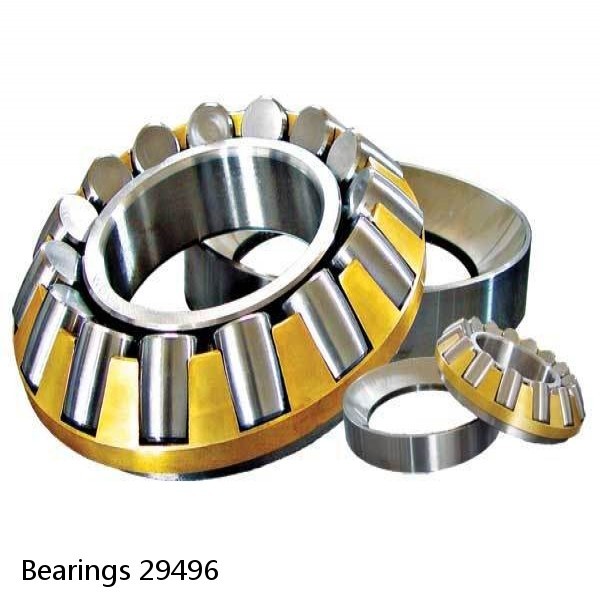 Bearings 29496
Bearings 29496 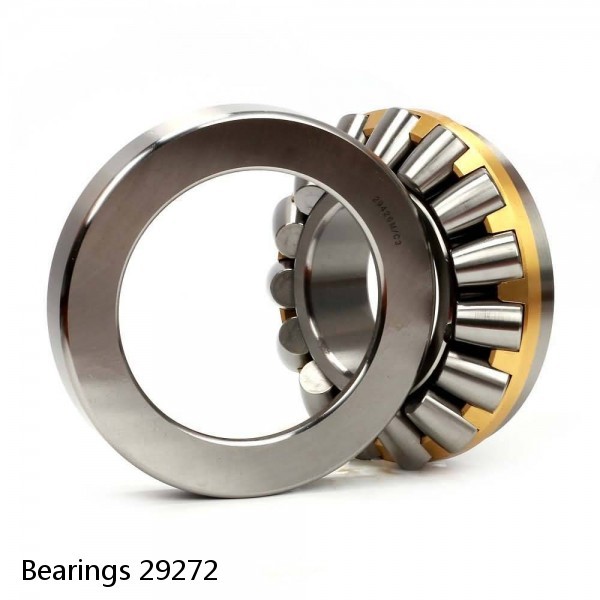 Bearings 29272
Bearings 29272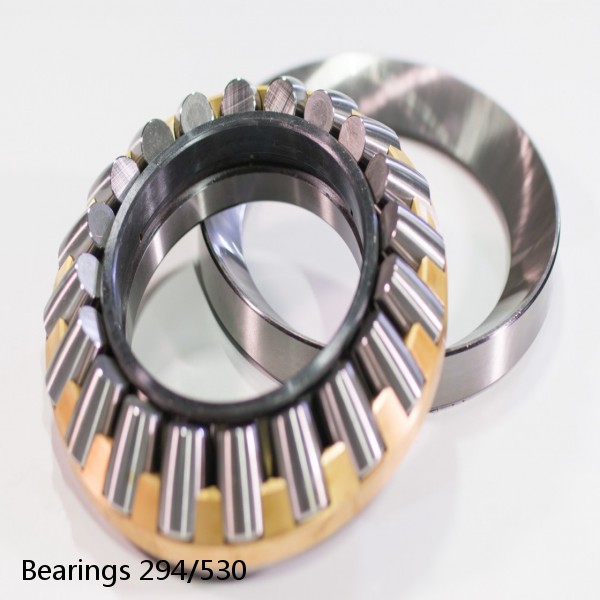 Bearings 294/530
Bearings 294/530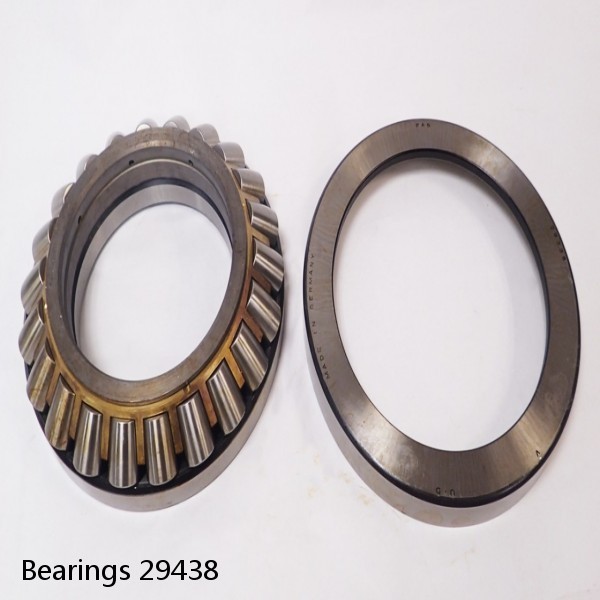 Bearings 29438
Bearings 29438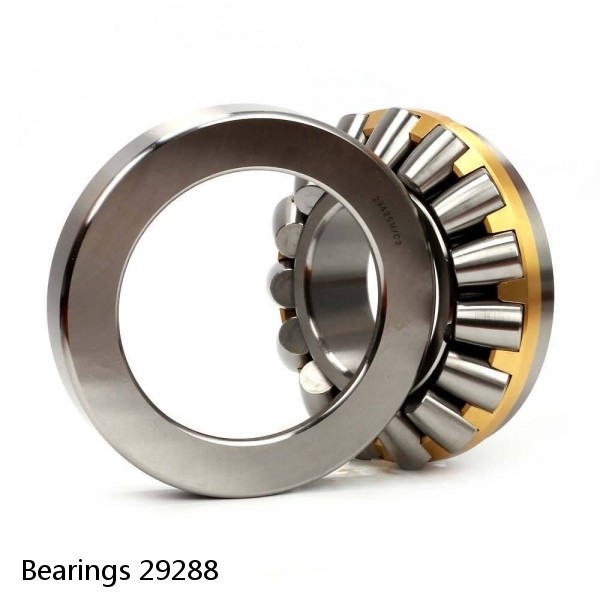 Bearings 29288
Bearings 29288